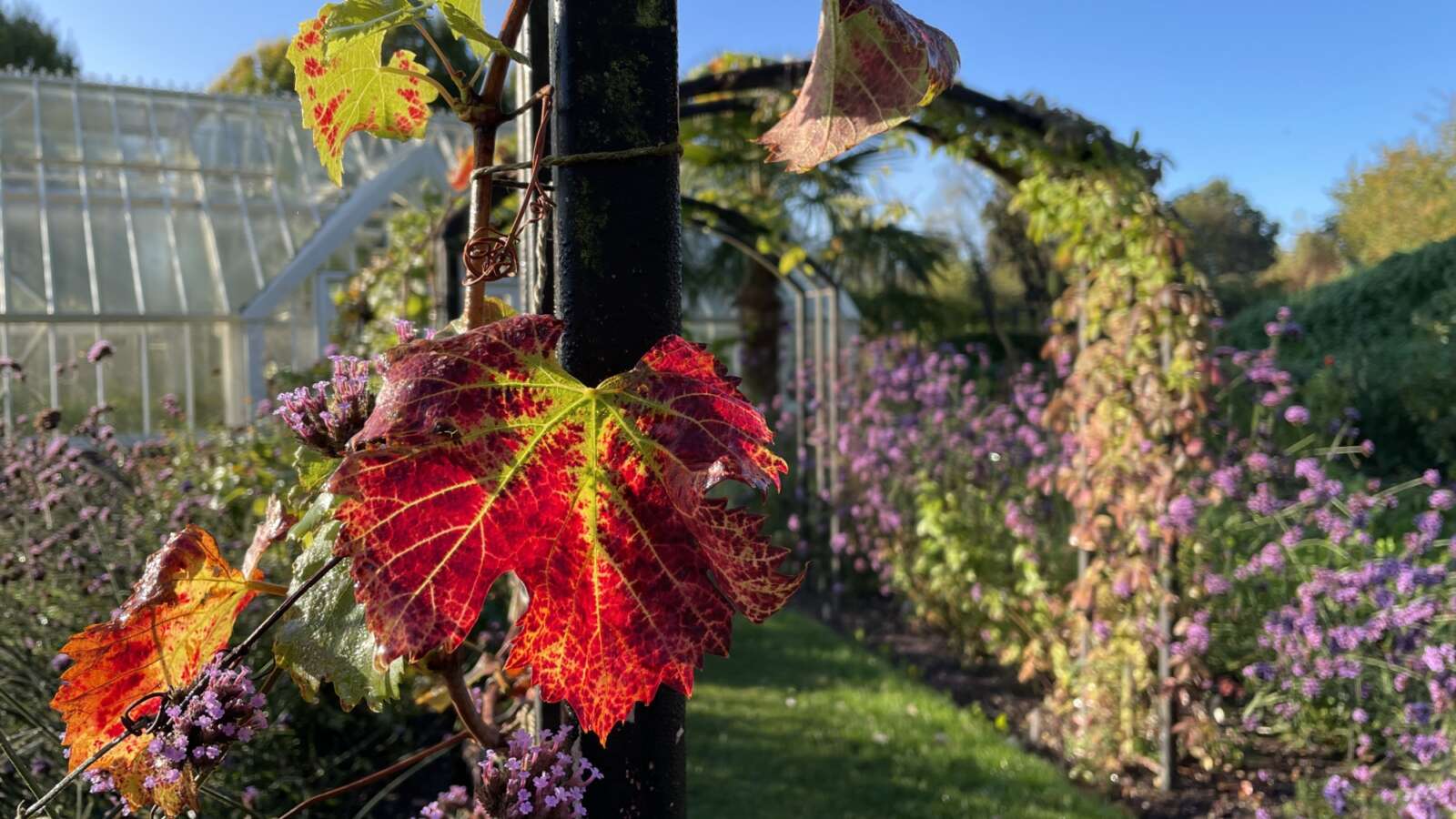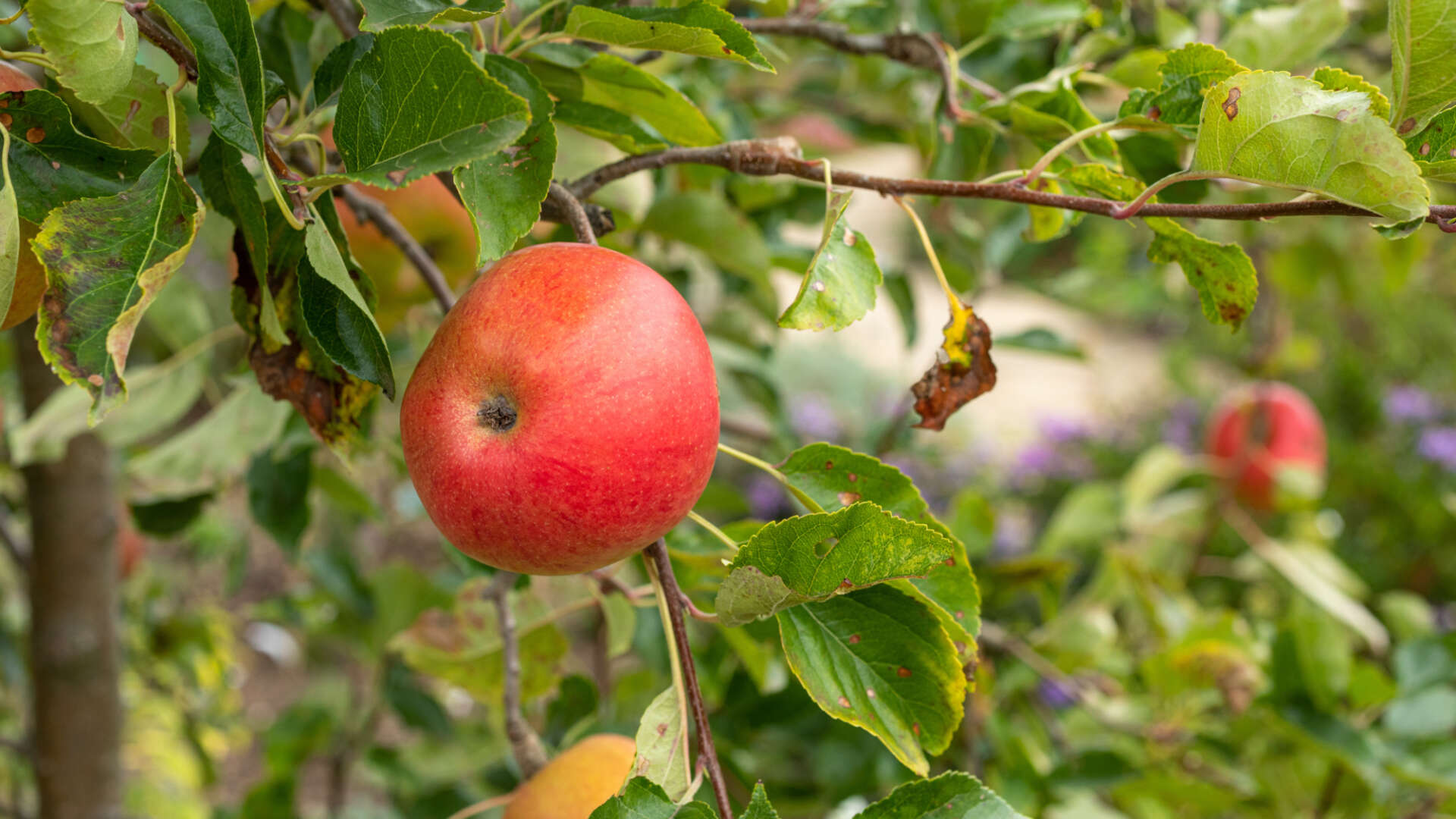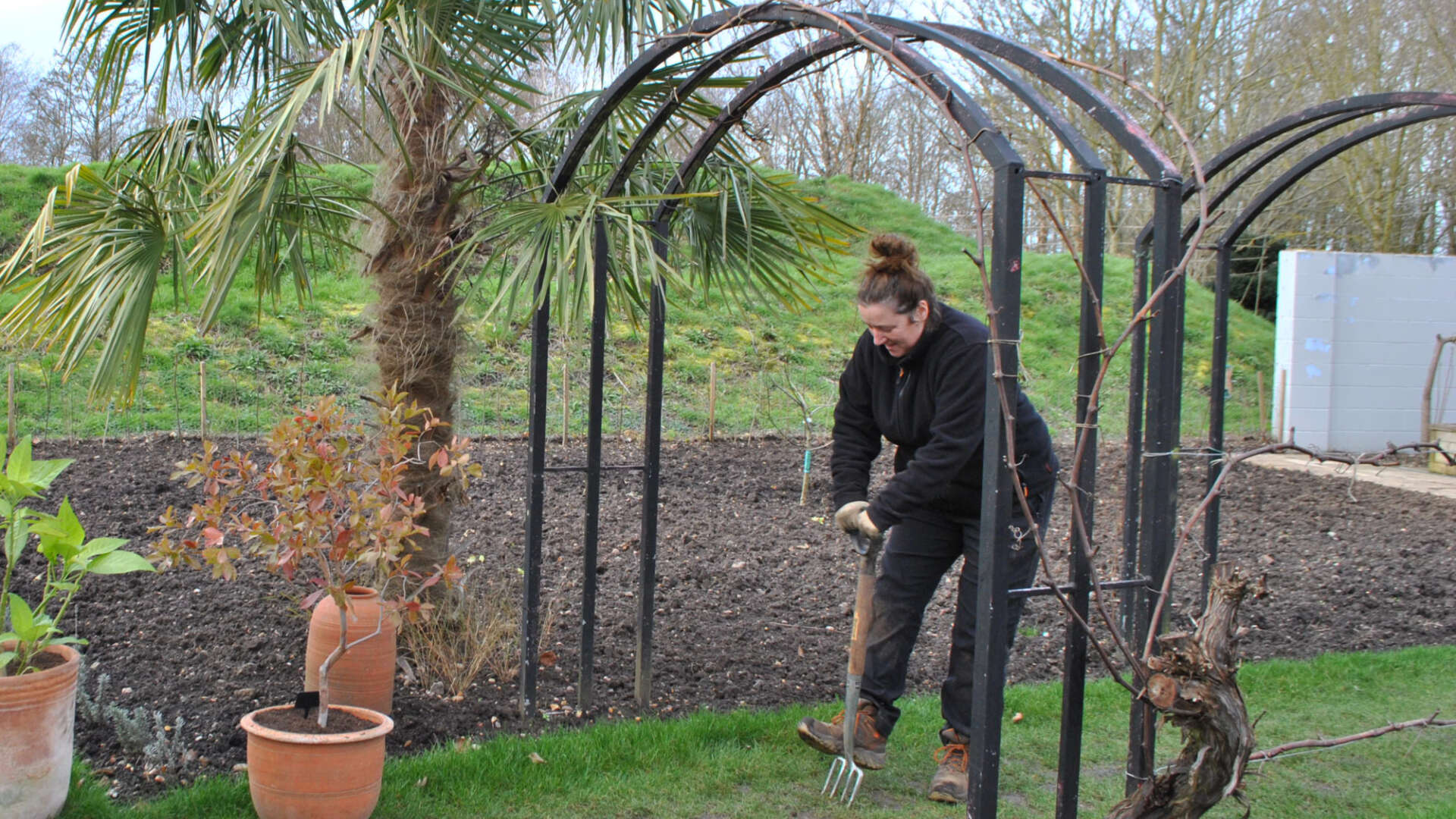
Your organic garden in November
Don’t be too efficient during your final tidy up of the year. Provide over-wintering nooks and crannies for garden creatures such as hedgehogs, toads and ladybirds. Leave tufty grasses, small log heaps and piles of leaves to provide shelter and warmth until next spring. They’ll reward you by being on-hand to control early pests!
If you only have time for one thing
Take hardwood cuttings. This is probably one of the easiest propagation methods – and provides lots of free plants. Good choices are: dogwood, flowering currant, buddleja and honeysuckle. Cuttings are taken once the plant is dormant, from mid-autumn to late winter, and you need to look for a healthy stem with no sign of damage or disease. Snip a piece 15-30cm long, cutting the bottom straight across, below a bud, and your top cut above a bud or pair of buds at a sloping angle. Pop in a container so at least two thirds are below the compost level and keep checking for roots.
Three things to spot in November...
Murmurs and hoots: if you have a garden full of trees or live near a woodland or park, you may hear the hoots of owls this month as rivals call to each other. And November is also the perfect time to see swirling starling murmurations. Ensure you keep light levels low in your garden to encourage more wildlife activity.
Hibernating insects: it can be tempting to clear away debris and cut back old stems this month, but in doing so you may be destroying habitats. Orange-tip butterflies, for example, will spend winter as thorn-shaped pupa, and garden tiger moths hide in leaf litter. Angular shieldbugs can also found in vegetation, until warmer weather in spring activates them into looking for a mate.
Red admirals: this late-flying butterfly can be seen feeding on rotting fruit under trees, and on brambles and ivy. Most die off over winter, but due to our warmer climate they can survive until spring in the south.
Find more advice on November organic gardening tasks including soil, vegetables, fruit, herbs and flowers below. Or head to What to sow in November and our Vegetable Growing Cards for more tips.
Soil and composting 🔗
Soil
- Keep off wet soil in all parts of the garden to avoid compacting and damaging the structure. If you absolutely have to walk on it in the wet, stand on a plank to spread your weight. This is especially important for clay soil.
- Protect bare soil during the winter months. Use autumn leaves as a mulch (cover) during winter weather. Don’t worry if there are fungi growing in the leaves; they won’t harm your plants.
- Refresh your knowledge about soil care by reading Managing your Soil.
- Don’t stop weeding. Hoe off/pull out any annual weeds, and dig out perennial ones that are revealed. Compost green foliage, but not seed heads nor perennial weed roots.
- Continue to collect fallen autumn leaves and pile them, keeping them damp, in large bin bags or heaps, to make leafmould.
Composting
- Avoid bonfires. If the compost bin is still overflowing, just store excess material in bags until the heap subsides enough for more to be piled in.
- Leaves with blotches are safe to compost as their diseases are generally air-borne and composting will break it all down. However, never add plant roots with soil-borne diseases such as Brassica club-root and onion white rot. Their spores will survive the composting process.
- Give the heap a turn to aerate and stimulate the composting processes.
- Check its consistency - if too dry add wet materials like nettles and green weed foliage and water them in. If too wet, add scrumpled junk mail, cardboard and small twigs which are good high-carbon materials and will aerate the heap. For advice on composting see Home Composting
- Wood-waste needs to be composted until it’s thoroughly broken down, black and crumbly. Soaking large piles of shreddings with nettle tea will speed up the process. Alternatively, use fresh shreddings as path-coverings to keep feet mud-free in wet weather. Sharing the hire-costs of a shredder with neighbours is an economical way of dealing with piles of prunings.
- Worm bins that are to remain outside need to be well-insulated to help the worms survive winter conditions. Reduce feeding in cold weather, as the worms will not consume very much at this time.

Vegetables 🔗
- Check your leeks for ‘bolting’ (flowering). There is no way to stop this process so harvest the plants as soon as possible. You will still get a usable proportion of leek around the sturdy flower stem.
- Net brassica plants (kale, sprouts, broccoli etc) against pigeons if you haven’t already done so. Pigeons become an increasing problem as the weather gets colder.
- Lift and store all remaining root crops still in the ground such as carrots, swede, beetroot and turnips.
- Download the Vegetable Growing Cards to get inspired on how to grow new varieties of veg next year.
Pest and Disease watch
- Remove dead and yellowing leaves from winter brassicas. They can encourage fungal diseases and harbour pests. Clear leaves away into the compost bin
- Check that the netting keeping pigeons off your brassicas is sturdy and held high enough off the plants
- Control Cabbage whitefly and Mealy cabbage aphid. They can build up over the summer and survive the winter on Brussels sprouts, broccoli, winter cabbage and kale. See members' factsheets Cabbage whitefly and Mealy cabbage aphid.
- Also keep a look out for Leek rust and Leek moth. See members' factsheets Leek rust and Leek moth.

Fruit 🔗
- Continue to plant new trees and bushes supplied as ‘bare rootstock’. See Planting fruit trees and bushes
- Clear competitive growth (weeds and grass) from around fruit trees. Grass in particular is very greedy, and can reduce cropping and may even kill young trees. Allow a square metre of clear soil for each tree. Mulch to suppress re-growth.
Pest & disease watch
- Inspect apple trees for woolly aphids; look for a whitish fluffy coating where branches join the trunk, and in cracks in the bark. Rub off on sight as they can damage the tree, allowing canker and other diseases to enter.
- Pick every last fruit off fruit trees. Fruit hanging on trees over winter is one of the main sources of brown rot infection in the spring. The other main source is infected shoots and spurs. These apples should not be composted at home. Rather, add them to your council compost bin, as they will get composted at high temperatures. Keep the lid on to make sure the spores don’t spread.
- Apply sticky barriers to apple, pear, plum and cherry trees to prevent female winter moths climbing up into the trees. Remember to put a barrier round tree stakes too – below the tree tie.

Herbs 🔗
- Clear away and compost dying foliage and stems.
- Dig up and destroy mint plants affected by rust. Replace next year with new, clean plants.
- Check rosemary plants regularly for rosemary beetle. Remove and destroy adults and larvae on sight.
- Harvest any lingering seeds and let them dry thoroughly before storing.
- Pot up some chives to keep them growing a bit longer. They can sometimes produce growth throughout the winter in a cold greenhouse
- Check out our advice on Herb Growing for detailed information on a wide range of herbs.
Flowers 🔗
- Continue to save the last few seeds from late-flowering plants. For more information, see Seed saving.
- Cut rust-affected hollyhocks down to the ground.
- Remove all black-spot infected leaves from roses, and from the ground surrounding them. Prune out stems showing black spot.
- Don't put all this infected material in your own compost heap, use a local council green waste bin for professional composting.
Keeping the growing area healthy 🔗
Greenhouse
- Fungal spores and many pest-pupae over-winter in the soil at the base of plants, ready for action once spring arrives and growth begins again.
- Remove (and compost) old mulches in all areas of the garden, and lightly dig around the base of plants to expose pests to predators (birds love grubs!) and winter weather.
- Remove mouldering foliage to the compost heap, but avoid disturbing large piles of leaves now. Beneficial creatures will be hibernating in their shelter.
- Hang fatballs and bird feeders around the garden. Birds coming in to feed will also enjoy feasting on over-wintering aphids and other pests.
- Scrub pots and seed trays before stacking away, to get rid of any lingering pests and diseases.
- Keep watch for pests still active and squish them off.
- In the greenhouse, grease staging legs with fruit tree grease to stop vine weevil adults from climbing up to lay eggs in any over-wintering plants in pots.
- Clear away any leftover debris from summer sowing/planting. This will reduce the number of over-wintering pests, but retain spiders (useful predators) in corners.
Pond
- Leave alone now in order not to disturb hibernating creatures. Just continue to remove duck weed when seen. Scoop out falling leaves as they can foul the water as they rot.

Lawns
- Your lawn is full of plants, not just grass, all of which need care. This is the month to spike the ground to open it up, and brush or lightly rake in a soil conditioner such as mature leafmould, or composted green-waste.